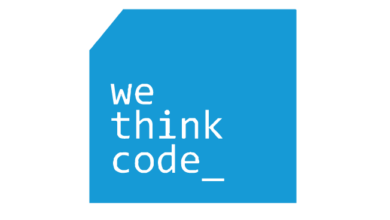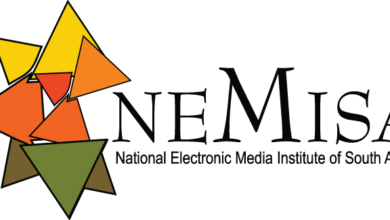How To Get A Job On LinkedIn

Most people dislike social networks because they feel that it exposes too much of their personal lives to the public. But with Linked in, it just might be a necessary for your career. The list below gives you tips on how you can use LinkedIn to find your perfect job.
1. Check out the jobs section
LinkedIn has a dedicated jobs section. Employers post vacancies in the hope that a savvy jobseeker like you will come across them and turn out to be the ideal candidate. Click on the Jobs tab at the top of the homepage and you’ll be taken to a keyword search box as well as a list of suggested vacancies based on what your profile says.
2. Complete your profile
The more complete your LinkedIn profile is, the more jobs LinkedIn will be able to suggest for you. A complete profile obviously also appeals to people viewing it, as the reason they’re looking at it is to find out as much as they can about you. When a potential employer looks at your profile, they’ll be forming an opinion based on your tag line, summary box, and specialities. Your experience and education will most probably be important to them too, but you have more freedom in how you word those first three fields mentioned, so make the most of them. Also, right at the bottom there’s a field where you can put what you’re ‘interested in’. This basically means you get to say what you’re on LinkedIn for and what people can approach you with. If you’re on LinkedIn to boost your job search, don’t be shy, select ‘career opportunities’!
3. Join Groups
You’ll get more traffic to your profile if people know you exist. One of the best ways to maintain a visible presence on LinkedIn is to join groups and take part in their discussions. If you join several groups in your chosen career field, chances are you will keep coming across a few people who are also in all those groups. People build up a rapport by contributing to one another’s discussions in their shared groups. You can even start discussions asking for advice related to your job search, such as recommendations for good vocational courses.
4. Get Connected
Once you’re more familiar with people who share your interests or specialities, you’ll find yourself with more ‘Connections‘. Connections are to LinkedIn what Friends are to Facebook and Followers are to Twitter. You can invite people to become a Connection and be invited yourself. Don’t wait to be invited though-if you believe someone could be beneficial to you, would genuinely like to connect with them on a deeper level, or just find them really interesting, send that invitation out. A major advantage of being connected to someone is that you can message them for free instead of having to pay for an upgrade to ‘InMail’.
5. Get the Messages out
Why is the ability to send messages so important? Many LinkedIn Members don’t have their email addresses on their public profile, so unless you know someone personally anyway, you have no way to contact them privately other than through the Messages function. Whether you message Connections to ask outright if they know of any job openings, to tap them for information on their organisation, or to arrange a voluntary/shadow placement, do it in the right way. Be clear about why you’re contacting them and what you’re asking for. Ask them if there’s anything *they* need help with. I’ve contacted several Connections in this way and they’ve been all too happy to help me every time.
6. Take part in the Q&A
Another function that helps you meet people and turn them into Connections is the Q&A. Here you can ask the whole LinkedIn community questions on almost anything, provided the topic loosely fits in with one of the designated categories. Again, asking questions is useful for getting information and advice on a particular job role, organisation or industry. It’s not the quantity of answers that you get but the quality. I’ve asked questions and only gotten one answer, but because that answer was useful to me, I went away happy. Just as important is answering questions. It’s another way of drawing people’s attention to you and your profile. And if you answer questions on your chosen specialties, potential employers get to see your knowledge and experience in action.
7. Share updates
Yes, LinkedIn, like every other social network, has the dreaded status update feature. Use it to your advantage by keeping your Connections up to date with your voluntary work, skills building or networking activities. This lets employers know that you’re being active and creative in your job search-showing them your enthusiasm and commitment in targeting the right role.
8. Recommendations
People don’t just have to take your word for it, though. The Recommendations feature allows people who’ve worked together in an organisation or on a project to endorse one another. Each recommendation only has to be 2 or 3 lines: sometimes ‘Ms. Jobseeker is a very competent accountant and very easy to work with. She went out of her way to assist me’ is enough to help a potential employer or client build up their picture of you. How do you get Recommendations? Ask! On your profile page, click on the ‘Get Recommended’ link and fill in the form it takes you to. Again, don’t be shy-if the feature’s there, you might as well use it!
9. Find events to go to
As useful as social networking can be, you don’t have to deprive yourself of offline networking. In fact, LinkedIn can even help you find events to attend, as that’s yet another thing Members are able to post about. On the home page, roll your pointer over the More tab and select Events from the drop down menu. In Events Home, you can then see which events your Connections are attending or interested in and you can also view the most popular events on the whole of LinkedIn. Click on the ‘Find Events’ tab for a keyword search filtered by date, location and type. It’s a very handy way to quickly find local events connected to your specialities or chosen industry.
10. Explore the other applications
There are even more LinkedIn applications that could be of use to you. By getting to the Applications Directory through the ‘More’ drop down menu, you’ll see that you can connect your blog and Twitter updates to LinkedIn; share a personalised Amazon reading list, content and presentations; and create polls. Put simply, these are all ways to inform people about yourself and/or gather information for your job search.





